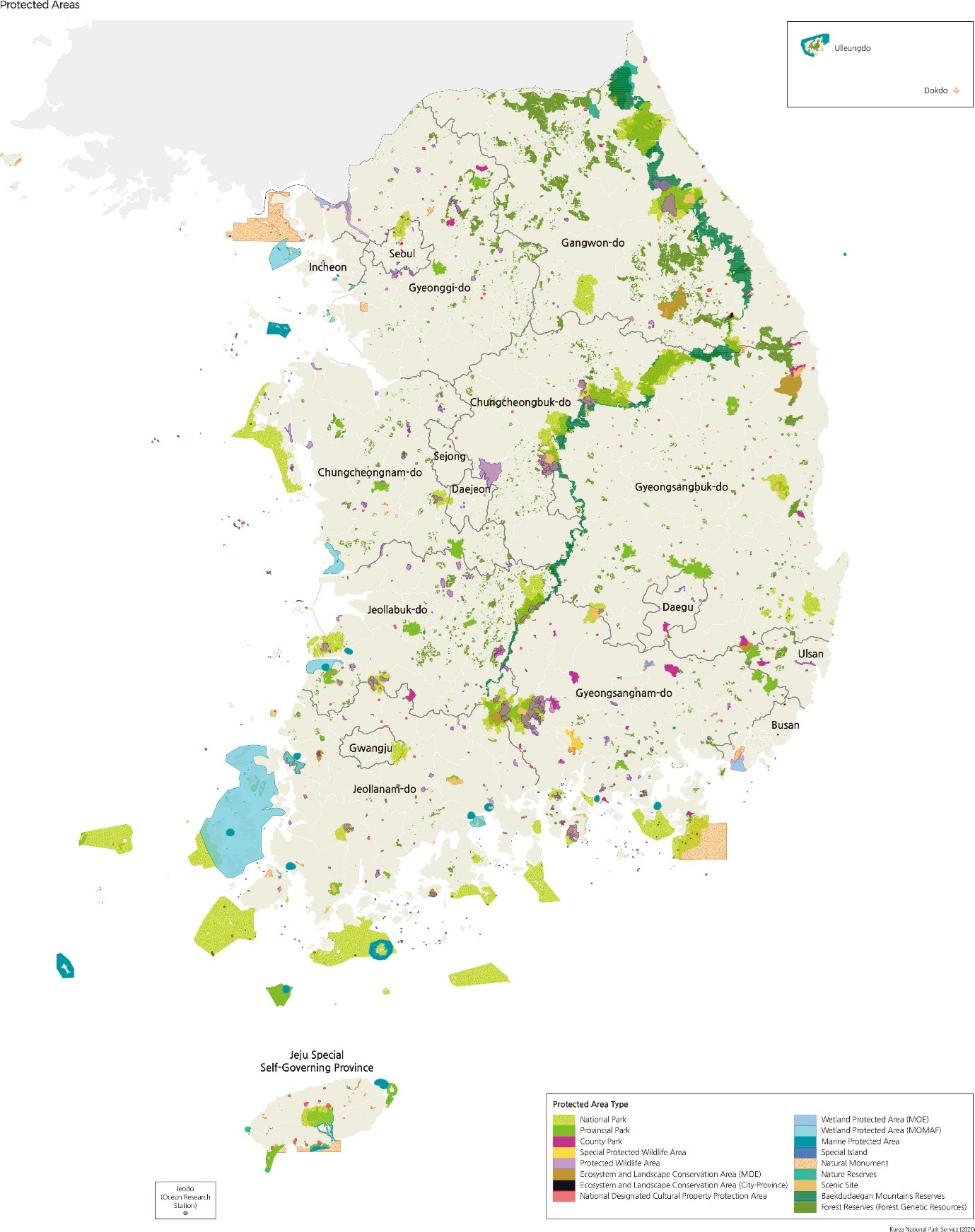Protected Areas in South Korea
6/6/20232 min read


Protected areas (“PAs”) in South Korea comprise:-
1. 22 national parks
2. Natural parks
a. Provincial parks (in metropolitan cities and provinces)
b. County parks (in local districts)
c. Ecosystem & landscape conservation areas
d. Wetland protected areas
e. Marine protected areas
f. Special islands
g. Protected wildlife areas
h. Special protected wildlife areas
i. Genetic resources protection forests
j. Forest reserves
k. National designated cultural property protection areas
l. Natural monument protection areas
m. Nature reserves
n. Scenic sites
o. Baekdudaegan Mountain Reserve
PAs cover nearly 17% of land and inland waters, and about 2.5% of marine and coastal areas.
The conservation goals of each category of protected area vary according to the governing legislation. For instance, the management of national parks permits sustainable use of natural resources, while ecological landscape conservation areas and wetland conservation areas are preserved as is.
Lee et al (2013) observed that, as of 2011, the vast majority of protection areas in South Korea were under direct national government control, such control being associated with issues such as “multiple designations of one and the same area for protection, overlapping management authorities, and management of privately owned land in the protection areas” (Lee et al 2013:71-72). There now appears to be a range of management mechanisms for each set of protected areas. For example, the 34 marine protected areas are managed by Korea Marine Environment Management Corporation. Notably, with the exception of Hallasan National Park, which is managed by the Jeju Special Self-Governing Province, all national parks are managed by the National Park Authority.
Considering the country’s peninsular formation and its attendant vulnerability to flooding and rising sea levels, it may be prudent to designate additional coastal protected areas in order to adapt to climate impacts while conserving the inherent rich coastal and wetland biological diversity supported by those areas.
References:
CBD. ‘CBD Thematic Report on Protected Areas - Republic of Korea (English version)’. https://www.cbd.int/doc/world/kr/kr-nr-pa-en.pdf
KOEM. ‘Designation and Management of Marine Protected Areas’. https://www.koem.or.kr/site/eng/02/10201040000002019071509.jsp
Lee et al (2013). ‘A Comparative Study on Protected Area Management in South Korea, Japan and China’. J. Korean Env. Res. Tech. 16(1):71~82(2013). http://koreascience.or.kr/article/JAKO201316536729487.pdf
The National Atlas of Korea. ‘Ecosystem Management’. http://nationalatlas.ngii.go.kr/pages/page_2317.php
The National Atlas of Korea. ‘National Parks and Protected Areas’. http://nationalatlas.ngii.go.kr/pages/page_1306.php
The National Atlas of Korea. ‘Sea Level Rise’. http://nationalatlas.ngii.go.kr/pages/page_775.php
UNEP-WCMC (2023). ‘Protected Area Profile for Republic Of Korea from the World Database on Protected Areas’. June 2023. Available at: www.protectedplanet.net

